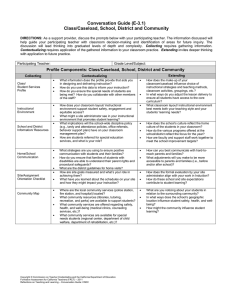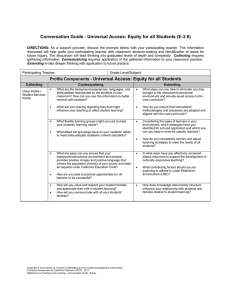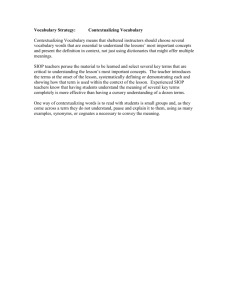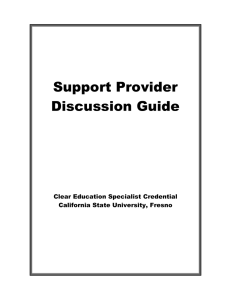- TCOE BTSA Induction has MOVED!
advertisement
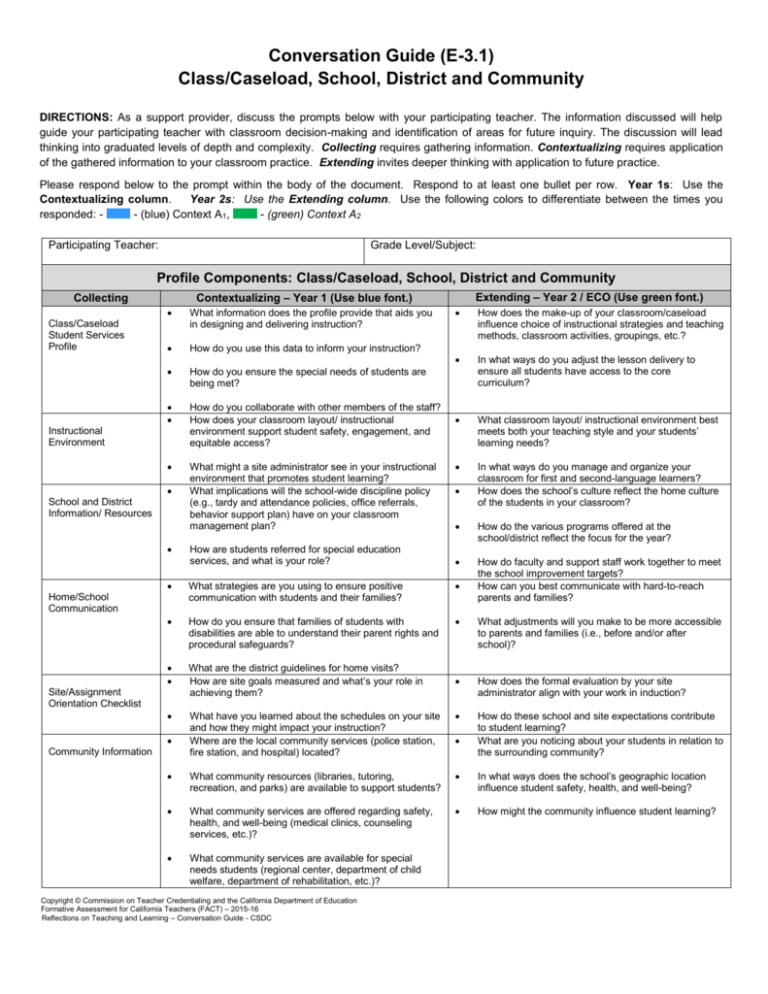
Conversation Guide (E-3.1) Class/Caseload, School, District and Community DIRECTIONS: As a support provider, discuss the prompts below with your participating teacher. The information discussed will help guide your participating teacher with classroom decision-making and identification of areas for future inquiry. The discussion will lead thinking into graduated levels of depth and complexity. Collecting requires gathering information. Contextualizing requires application of the gathered information to your classroom practice. Extending invites deeper thinking with application to future practice. Please respond below to the prompt within the body of the document. Respond to at least one bullet per row. Year 1s: Use the Contextualizing column. Year 2s: Use the Extending column. Use the following colors to differentiate between the times you responded: - (blue) Context A1, - (green) Context A2 Participating Teacher: Grade Level/Subject: Profile Components: Class/Caseload, School, District and Community Class/Caseload Student Services Profile Extending – Year 2 / ECO (Use green font.) Contextualizing – Year 1 (Use blue font.) Collecting What information does the profile provide that aids you in designing and delivering instruction? How do you use this data to inform your instruction? How do you ensure the special needs of students are being met? How do you collaborate with other members of the staff? How does your classroom layout/ instructional environment support student safety, engagement, and equitable access? What might a site administrator see in your instructional environment that promotes student learning? What implications will the school-wide discipline policy (e.g., tardy and attendance policies, office referrals, behavior support plan) have on your classroom management plan? Instructional Environment School and District Information/ Resources How are students referred for special education services, and what is your role? How does the make-up of your classroom/caseload influence choice of instructional strategies and teaching methods, classroom activities, groupings, etc.? In what ways do you adjust the lesson delivery to ensure all students have access to the core curriculum? What classroom layout/ instructional environment best meets both your teaching style and your students’ learning needs? In what ways do you manage and organize your classroom for first and second-language learners? How does the school’s culture reflect the home culture of the students in your classroom? How do the various programs offered at the school/district reflect the focus for the year? How do faculty and support staff work together to meet the school improvement targets? How can you best communicate with hard-to-reach parents and families? What strategies are you using to ensure positive communication with students and their families? How do you ensure that families of students with disabilities are able to understand their parent rights and procedural safeguards? What adjustments will you make to be more accessible to parents and families (i.e., before and/or after school)? What are the district guidelines for home visits? How are site goals measured and what’s your role in achieving them? How does the formal evaluation by your site administrator align with your work in induction? What have you learned about the schedules on your site and how they might impact your instruction? Where are the local community services (police station, fire station, and hospital) located? How do these school and site expectations contribute to student learning? What are you noticing about your students in relation to the surrounding community? What community resources (libraries, tutoring, recreation, and parks) are available to support students? In what ways does the school’s geographic location influence student safety, health, and well-being? What community services are offered regarding safety, health, and well-being (medical clinics, counseling services, etc.)? How might the community influence student learning? What community services are available for special needs students (regional center, department of child welfare, department of rehabilitation, etc.)? Home/School Communication Site/Assignment Orientation Checklist Community Information Copyright © Commission on Teacher Credentialing and the California Department of Education Formative Assessment for California Teachers (FACT) – 2015-16 Reflections on Teaching and Learning – Conversation Guide - CSDC

